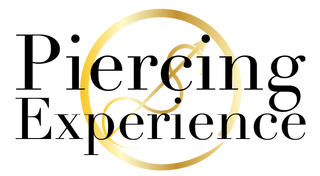About ASTM International
Founded in 1898 as the American Chapter of the International Association for Testing and Materials and most recently known as the American Society for Testing and Materials, ASTM International is a not-for-profit organization that provides a global forum for the development and publication of voluntary consensus standards for materials, products, systems and services. ASTM standards are accepted and used in research and development, product testing, quality systems, and commercial transactions around the globe.
What types of standards does ASTM develop?ASTM develops six principal types of full-consensus standards:
- Standard Test Method–a definitive procedure for the identification, measurement, and evaluation of one or more qualities, characteristics, or properties of a material, product, system, or service that produces a test result.
- Standard Specification–a precise statement of a set of requirements to be satisfied by a material, product, system, or service that also indicates the procedures for determining whether each of the requirements are satisfied.
- Standard Practice–a definitive procedure for performing one or more specific operations or functions that does not produce a test result.
- Standard Terminology–a document comprised of terms, definitions of terms, descriptions of terms, explanations of symbols, abbreviations, or acronyms.
- Standard Guide–a series of options or instructions that do not recommend a specific course of action.
- Standard Classification–a systematic arrangement or division of materials, products, systems, or services into groups based on similar characteristics such as origin, composition, properties, or use.
What we are interested in here at Piercing Experience are the Standard Specifications for materials for surgical implant.
What is the function of the ASTM?ASTM develops standard test methods, specifications, practices, guides, classifications, and terminology in 130 areas covering subjects such as metals, paints, plastics, textiles, petroleum, construction, energy, the environment, consumer products, medical services and devices, computerized systems, electronics, and many others. ASTM Headquarters has no technical research or testing facilities; such work is done voluntarily by the ASTM members located throughout the world.
Providing the value, strength, and respect of marketplace consensus to be the foremost developer and provider of voluntary consensus standards, related technical information, and services having internationally recognized quality and applicability that
- promote public health and safety, and the overall quality of life;
- contribute to the reliability of materials, products, systems and services; and
- facilitate national, regional, and international commerce.
Government agencies demand evidence that voluntary consensus standards meet high principles so that they can rely on them for both regulation and procurement.
What are the Principles ASTM follows?U.S. interests strongly agree on the principles necessary for the development of national or international standards to meet societal and market needs.
In successful standards processes
- Decisions are reached through consensus among those affected.
- Participation is open to all affected interests.
- Balance is maintained among competing interests.
- The process is transparent – information on the process and progress is directly available.
- Due process assures that all views will be considered and that appeals are possible.
- The process is flexible, allowing the use of different methodologies to meet the needs of different technology and product sectors.
- The process is timely; purely administrative matters do not slow down the work.
- Standards activities are coherent, avoiding overlap or conflict.
Successful standards processes yield the right results
- Standards are relevant, meeting agreed criteria and satisfying real needs by providing added value.
- Standards are responsive to the real world; they use available, current technology and do not unnecessarily invalidate existing products or processes.
- Standards are performance-based, specifying essential characteristics rather than detailed designs.
- The representation of consumer interests in standardization is important because standards are increasingly used to define parameters of products and services critical to consumers.
Where do these standards apply?For products, processes and services having an impact beyond the U.S., ASTM seeks at most one globally applied standard and one globally accepted test with conformity assessment processes appropriate to the needs of the parties.
- U.S. Government should work with governments in other countries, and through intergovernmental organizations, to minimize the use of different standards for the same purpose, different or duplicative tests for the same standards, and the use of standards as non-tariff trade barriers;
- Standards developers should partner inside and outside the U.S. in areas of mutual interest such as health, safety and the environment.
Is the use of ASTM standards mandatory?ASTM standards are developed voluntarily and used voluntarily. They become legally binding only when a government body makes them so, or when they are cited in a contract.
Who uses ASTM standards?ASTM standards are used by thousands of individuals, companies, and agencies. Purchasers and sellers incorporate standards into contracts; scientists and engineers use them in their laboratories; architects and designers use them in their plans; government agencies reference them in codes, regulations, and laws; and many others refer to them for guidance.
Why do so many people choose to use ASTM standards?
- ASTM’s voluntary, full-consensus approach brings together people with a diversity of backgrounds, expertise, and knowledge. The resulting standards reflect the needs of all these stakeholders.
- A balanced representation of interests at the standards-writing table increases quality and credibility.
- Intense round robin testing ensures precision.
- Strict balloting and due process procedures guarantee accurate, up-to-date information.
Does ASTM grant a seal of approval?No. ASTM develops and distributes standards; the Society does not verify that products are tested according to a standard. Many manufacturers however, indicate that a product has been tested according to an ASTM standard by indicating such information on the product label or packaging.
How do I obtain a standard?Standards can be purchased on the
ASTM web site, most cost about $25.
For More InformationTo read more about ASTM, visit the
ASTM About page here.
